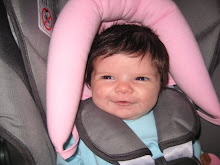I have always admired Thomas Kinkade’s painting because they look so peaceful. I’ve seen his paintings everywhere. I’ve been to the Kinkade galleries at several different malls throughout the country. I’ve even seen his paintings at the Military Base exchanges. I currently don’t own any Kinkade prints and don’t plan on it anytime in the near future. Before this week I knew nothing about Thomas Kinkade’s background. I always figured he was an excellent painter and good business man. After reading the blog prompt I was shocked. I immediately checked out the FBI investigation, Wikipedia and his website. The FBI investigation was interesting; slow sales at your retail stores and buy company shares at a reduced price, does this really happen in America? The article didn’t really make me a Kinkade hater, it just raised some questions. The people who sued him need to realize they made an investment, I don’t know the whole story but investments are risky. If in fact Kinkade did undercut their prices and made them sell prints that had slow sales, shame on Kinkade. In the end we all get what’s coming to us!
I do have a problem with the allegation that Thomas Kinkade uses the Christian card to real-in investors. Christians are known to be honest and hard working people who love the lord. In my personal life I’ve made sales by telling the customer where I go to church, it makes them feel at ease and that they can trust you. If Kinkade did in fact play this card, it’s very unethical. I did go on the Wikipedia website to look up information on Thomas Kinkade. In my opinion Wikipedia is only somewhat credible because anybody can put stuff on that website. How do I know one of Kinkade’s rivals isn’t on Wikipedia bashing him to reduce his sales? I was impressed by Kinkade’s charity work that he has done in the past for the Make-A-Wish foundation, and the Salvation Army. If you make lots of money you should help out the less fortunate.
Finally, I want to talk about Thomas Kinkade as an artist. To me he is an artist because he designs the prints and has painted in the past. To some he might not be a true artist and I would have to agree with them on some level. Personally, I will never have a Kinkade painting in my home because I believe they are overpriced. The point is people who buy Kinkade’s painting know what they are buying. I’m pretty sure they know Kinkade didn’t spend 18 hours on the print that is hanging in their hallway. Thomas Kinkade is a businessman who obviously knows what he’s doing. If I could make that much money I would sell prints too, but then again I don’t refer to myself as “Painter of Light.” I really don’t care if Kinkade sells mass amounts of prints because if there is a demand he should keep doing what he’s doing. But, I do hope his business practices are legal and ethical.















